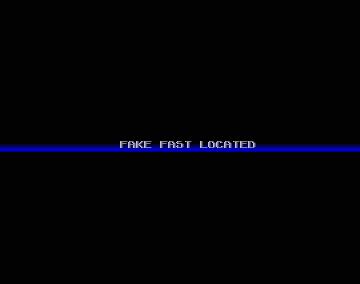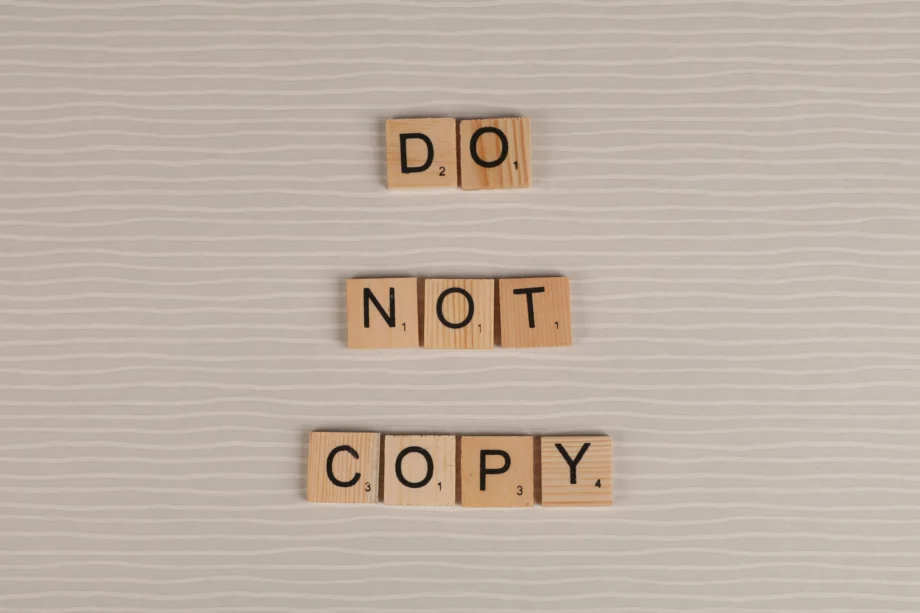At the end of January 2025, the Hungarian C64 graphician CopAss commented on the tenth and possibly last issue of Versus. He criticised the graphician Critikill and some other graphic artists in this thread at Pouet.net.
by Lars “Ghandy” Sobiraj of Nukleus
Images (from Pexels, no Copy! gallery, pouet and from Ghandy himself)
Critikill and other members of SWEET16 are said to be among the artists who win compos with their images at demo parties, but did not create them from scratch. That would be too easy for them. And far too difficult for the other competitors trying to get a good position, wrote CopAss.

He believes that if the audience knew how much help they had received without following the rules or being transparent, the people would “stop applauding“. According to CopAss, anyone who enters a competition without the help of artificial intelligence, Photoshop, other painting programs or the images of real graphic designers will no longer be able to place in the top three.
CopAss then posted a series of animations in the pouet.net thread. They begin by showing the source of the graphics. At the end of the animation they show the finished product of Critikill & Co. By the way, the tone of CopASS is strikingly aggressive. To sum up, the C64 graphic artist claims that you need (almost) nothing at all to act like Facet (here are some examples) or Critikill. Drawing like that and winning the compos is much too easy in his opinion.
Is the Amiga scene, filled with cheaters?
Yes, okay. Maybe that’s true for them and a few others, but certainly not for the rest of humanity. If you’re not talented, you’ll never succeed. Unfortunately, CopAss neglected to contact any of the artists in question beforehand to inform them or ask for a statement. That would at least have been fair. But I’m afraid I guess that’s not what the Hungarian wanted. He wanted to get rid of his frustration that everything was better in the glory days and that nowadays only “cheaters“, as he called them, were winning the compos.
He later proudly announced that his posting had already caused some members to leave the group SWEET16. SWEET16 had also lost some fans in their Facebook group, CopAss wrote with pride. Other graphicians from the Atari scene had even thanked him for the exposure, he added.
Of course, there is no doubt that some people have violated the existing party rules with their activities. As a result, they should have to be stripped of their prizes and given to graphicians who had followed the rules, CopAss demanded. Fortunately, the discussion moved from the Versus #10 feedback thread to Pouet’s BBS. Even though it wasn’t the first artificial intelligence (AI) dispute, I still think the discussion belongs to this place.

Are there any rules that can be broken?
In order to analyse the whole thing, we have to go back to the roots. We have to look at what happened in the past.
Point 1: There are no written rules of the scene that can be broken. This is a fact. Not to forget, that the rules set by the party organisers are different. We asked the staff of upcoming events to send us their compo rules on the use of AI. The results of our extensive survey can be found there.
Point 2: As said, some graphicians have indeed broken the rules of the parties, if only because they were not transparent about how they created their work. But they should have done that. They should have been honest. Or they broke the rules, because some parties banned any use of artificial intelligence.
Then there’s Point 3: Let’s remember the No Copy gallery! for a moment! In the 90s, unfortunately, it was ‘normal’ for some graphicians to steal motifs from painters such as Boris Vallejo, Jeff Easley or Hajime Soroyama. Or they used the motifs from photos as a template. And hey, I’m not talking about a few beginners who faked, but about the crème de la crème of the scene’s graphic artists of that period of time.

Point 4: Many Amiga demos would never have been created without external resources.. Just think of the classic ‘State of the Art‘ or ‘9 Fingers‘ from Spaceballs (watch the Making Of video from ‘9 Fingers’ upward). Without the help of a camera and a video software it would not have been possible to get the coders dancing sister and her friend onto the disk. Without the video capture, one of the most famous demos of all time would never have happened.
The guys from The Silents are also said to have used their employers’ hardware to create ‘Hardwired’. So where was the storm of protest in the scene at The Party 1991? Well, there was none as far I heard. And once again: What rules did the groups break in the early 90s? Exactly, none. Well then, dear scene Cop, Mr. Watchdog .. erm.. copArse or something similar – where the hell is the f*cking problem?
‘the Diskmag – the one and only!’
If we weren’t extraordinary, this article would be over now. Because even if the following paragraphs only deal with the tech industry and have few to do with the demo scene itself, they should explain why the whole topic is so problematic. That, and the fact that you can still clearly see where many AI graphics come from. Open your eyes, nice graphics look different.
But let us move to California, USA. A lot has happened in the recent past! In March this year, Google and OpenAI asked the US government for legal exceptions to the copyright law. They want permission to train AI models with copyrighted material. They also wish to continue to do so without an explicit permission or any compensation. A number of publishers, actors and other rights holders have gone up on the barricades to oppose this.

Are all tech companies allowed to steal? At least they would like to do.
Memes of a masked criminal trying to break into a car are circulating on the internet. The man in the meme thinks that the existing legal situation is just as negative for his “business model” (breaking into cars) as the existing copyright law in relation to OpenAI & Co. The US companies Google (Gemini) and OpenAI (ChatGPT) are actually asking for nothing less than the Trump administration to finally give them the licence to steal! Frankly, if I were a criminal, I would demand equal treatment from the government. Why am I not allowed to open the driver’s side door, if tech companies demand to be allowed to steal? I wouldn’t understand that either.
Meta’s approach is no less thrilling in this context. The parent company of Facebook, Instagram and WhatsApp was involved in a real scandal in February. Internal emails that someone claimed to have leaked showed that the company had illegally obtained over 81 terabytes (!!!) of data. They downloaded it to train their own AI model. The download was via P2P and contained the contents of several shadow libraries like Anna’s Archive. Mark Zuckerberg’s company then claimed that downloading all the books and scientific works was not illegal. Why? After all, they said, no one could prove that they had uploaded someone else’s intellectual property to other file-sharing participants (peers). Because it was just a download, it should have been OK. Wow Meta! That’s an impressive excuse. At least you’ve got some humour.
The industrial thieves stole material from other thieves
In this context, the US AI providers keep repeating that the use of all this information must fall under the fair use clause. Fair use is a doctrine in United States law that permits limited use of copyrighted material (short excerpts of movies etc.) without having to first acquire permission from the copyright holder. The reason given is that US companies need to arm themselves against the new competition from China. The team behind DeepSeek, as the Chinese AI is known, most likely stole its data from the thieves from OpenAI (ChatGPT) and other AI developers. So at the end the thieves from one part of the earth stole material from other thieves. What can you say about this? Maybe just WTF!
And if that’s not enough, there have also been a number of illegal releases of complete AI models that have suddenly appeared on certain filehosters and P2P indexing websites looking like The Pirate Bay. What unites the players in this field is the fact that they all disregard the rights of authors, musicians, scientists, filmmakers and so on. They probably think that the content producers should just see how they can get by without a penny of payment! And no, let’s not talk about protecting the data or privacy of users of AI chatbots etc. right now. Why not? Quite simply, they both do not exist in the world of thoughts of AI companies.

I have not been able to contact CopAss by email to ask him. But I suspect that it’s precisely these circumstances that could have driven him mad. That, and the serious injustice associated with the use of AI technologies in competitions. That, coupled with a healthy dose of nostalgia for the good old days when everything was supposed to be better, is the most likely explanation. Don’t you agree?
We will soon hand the microphone over to Critikill, who will respond to the points of criticism in the follow-up to the debate. Unfortunately, Facet did not respond to my press request.
Last, but not least I also have to be honest and transparent. I have used the online service deepl.com to translate this article and then to improve my English. Don’t worry, you’ll still find spelling mistakes in there! 😉
What do you think? Please leave a comment below this article!
Related topics:
AI – opinions around graphics: an attempt to group Amiga sceners,
Artists doing old skool graphics (pixel gfx) on Amiga,
Graphic compos 2025: survey to party crews
the Diskmag
The one and only!
Submit your own article, or contact nukleUS!
Back to the Diskmag #1 (online), Back to the Diskmag (overview), back to Diskmags (main)
Amiga online magazines (home), Nukleus (home)

I completely disagree with this article that suggests AI has any place in retro graphics. AI absolutely does not belong here.
The very essence of retro graphics (Atari, Amiga, C64…) is keeping alive a passion that demands dedication, skill, and above all – patience!
A passion that still drives many pixel artists today, who would never dream of cheating this way.
What’s the point?
It’s no different than people cheating in online games just to win.
While there may be no written rules, there are unspoken principles: Using references? Fine. Pixel-perfect copying? No. And AI? Absolutely not!
Like many, I’ve just discovered some so-called “legends” from the golden era (who shall remain nameless) also cheated by lying to everyone. It’s appalling and shows complete disrespect for others. This doesn’t make it acceptable in any way!
Finally, bringing up the Spaceballs demo example is completely irrelevant here. That’s rotoscoping – a well-known technique. And Spaceballs never lied about how their demo was made. Totally off-topic.
I must admit I wanted to provoke some reactions in order to gain a bit attention for our new diskmag. I really love it if people do not only consume and they write something down on their own. I am writing online articles for money since 19 years and I love the dialogue with the readers. Nothing is more boring than the one way conversation of print magazines.
Of course these rules are unspoken, but still true. Technical cheats suck big time! That was the case in the 90s with Photoshop and it’s the same right now.
For me the essence of this argument is not about rules and lack of rules. For me, the bottom line is about LLM/AI prompt-to-image or prompt-to-code or prompt-to-music or prompt-to-whatever machines’ usage representing the exact opposite ethos than that of the demoscene. They are centralized and controlled by corporations. There is no DIY/Xeroxzine/graffiti/solderpunk ethos present in using them. Using them amounts to sheepishly fueling the techbro domination machine. With nothing but shortsighted and petty personal “gain” in mind. Whether these machines are used by expert artists or talentless rookies is completely irrelevant for the bottom line. In short, my problem with “LLM/AI art machines” lies in the fact that they aim to shorten, “streamline”, and eventually kill off the exact processes that are at the core of the demoscene and similar “folk-art” movements. They aim to eventually “unburden” the demoscene artist from the joy of actually producing the demoscene artwork with his/her own hands.
Did someone call me?!:D
I feel like this article went a bit wrong…
I’d like to clarify a few things…
I’ve been asked several times whether they use references or show timelapses or whatever.
The answer was always the same:
“no one limits my artistic freedom!”
“I’m not going to prove anything to anyone!”
“it’s tricky to record it all”
excuses, excuses…
How interesting that “real artists” don’t make a problem out of it. They upload it voluntarily because they know it makes them look authentic.
But they don’t need it, because you can tell right away who made a picture. Because “they have a unique style”!
The demoscene will really end up dead.
That’s how AI content flooded in.
Someone wrote at the Facebook group ‘Demoscene’:
Because as the people are getting more uneducated, it’s easier to take away their rights for these mega corporations. They are building out complete dictatorships in Western Europe, we are heading towards a really dark future unfortunately. People are just crazy, they don’t see reality, its easy to manipulate them.
A comment from Kha… that I post here, because it may be spam.
>this is by far the most stupid pile of crap I’ve read this decade.
Next time, please write more why an article is stupid, so we know this is just spam. In that way, we can improve how to approve comments in an objective way. Use your scene handle thats registered on Demozoo, Pouet, sceneId or such is one way to increase our quality of comments.